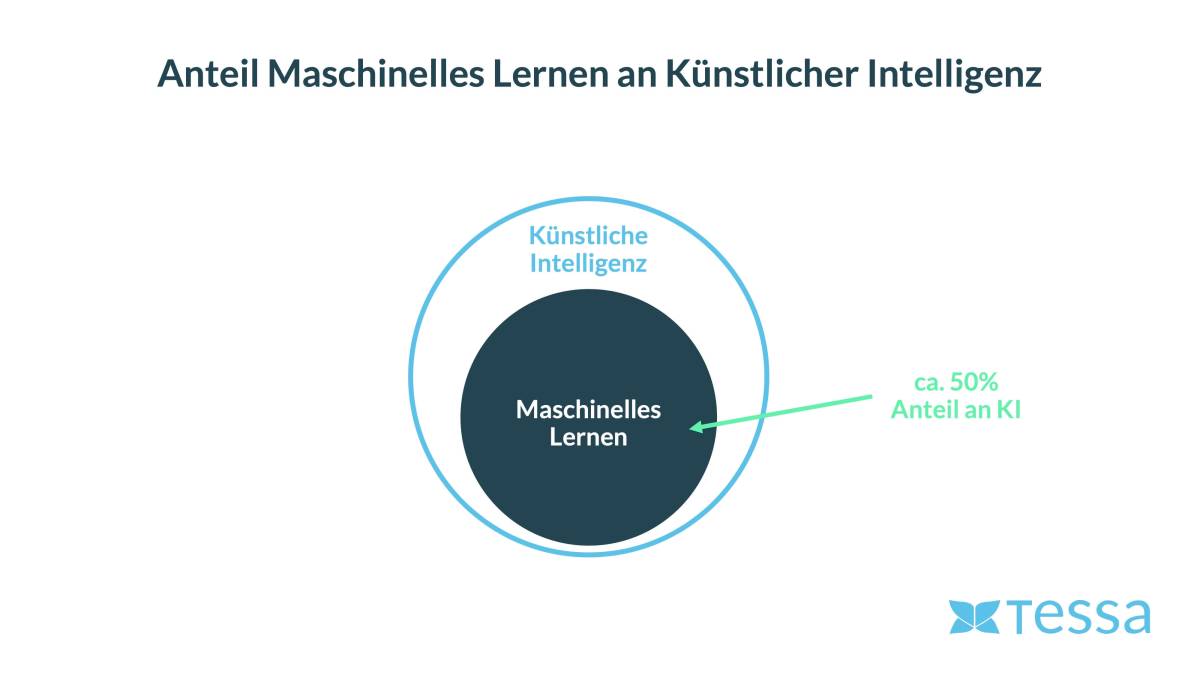What is Machine Learning?
What is Machine Learning? Machine learning and machine learning are synonyms but can be understood quite differently. In most cases, it involves a computer receiving training data for a specific task and subsequently autonomously answering that specific question. What might seem comparable to human learning is something entirely different for computers. The transfer of learned knowledge from one question to another is limited for computers. It is always necessary to train computers. Simplified: If you want a computer to recognize mountains in photos, you input 200 photos of mountains and tell the computer that mountains are visible in the photos. Afterward, you import photos of rocks, small hills, slopes, and perhaps even cakes. If the program completes the assigned task with 90% accuracy, it is likely comparable to human performance. This is a simple case of machine learning. In our example, this is supervised learning, where the computer can refer to material classified by humans. In the more complex scenario, the computer acquires its own training data, perhaps by inputting noun lists into Google, importing image search results, and comparing them with other photos. This is known as unsupervised learning. In this case, Markov models are used to calculate probabilities. It represents the initial stage of so-called deep learning.
Computers, in machine learning algorithms, generally work with probabilities. If a computer "discovers" material that it identifies, for example, as a mountain with a 75% probability, it can place it in a verification bucket. This bucket is then classified by a human. Machine learning continues through this training. Over time, this form of supervised machine learning increases the probability of recognizing objects. It's a simple form of reinforcement learning.
What is Machine Learning Used For?
Machine learning is now used in many different areas:
-
Speech Recognition: Phonetic dictionaries are needed for speech recognition, which translates spoken language into text that a machine can understand. Early approaches to this technology existed in the 1990s but became more relevant with the advent of digital assistants like Siri and Alexa.
-
Visual Pattern Recognition: In TESSA DAM, the Google Cloud Vision API is used to tag objects in photos, relying on visual pattern recognition through machine learning. Machine learning algorithms in visual pattern recognition are also essential for applications like autonomous driving and medical diagnoses. This involves analyzing X-rays, ultrasound visualizations, or CT scans.
-
Classification of Behavioral: Patterns An example of classifying behavioral patterns is identifying SPAM messages. Large email service providers like Google, T-Online, or Web.de/GMX use a combination of simple rules, user classification of messages as SPAM, and machine learning to continuously improve their SPAM filtering. Similar principles apply to social media or user click behavior in online advertising.
For machine learning algorithms, as evident from these applications, example patterns are always required for analysis, enabling automated decision-making in AI systems.
How Are Artificial Intelligence and Machine Learning Related?
The relationship is straightforward: machine learning is a prerequisite for artificial intelligence. More precisely, the outcome of machine learning results in artificial intelligence. This connection is clear, although it is not one-to-one. Artificial intelligence can also occur based on manually configured algorithms. For instance, a bank might manually configure an algorithm to detect potentially fraudulent credit card transactions based on specific criteria, such as online purchases from foreign countries. If a credit card holder has never made an international purchase, the system may require an additional security measure, like sending an SMS PIN.
Applying this to how a Digital Asset Management system (DAM) operates, the automatic assignment of an asset to a specific asset category is a basic form of artificial intelligence. In the case of the TESSA DAM, machine learning is not required for this process because the automatic assignment is manually configured. Therefore, the concept of artificial intelligence is broader than that of machine learning.





